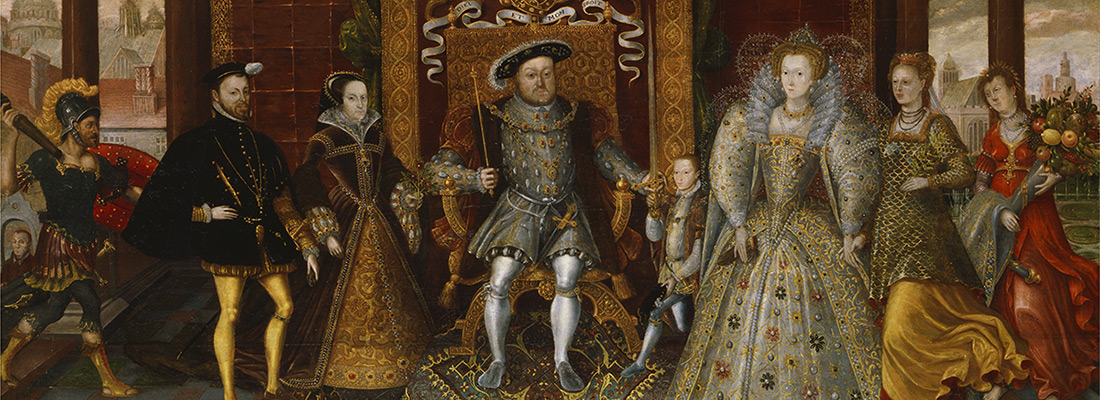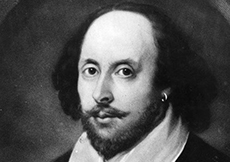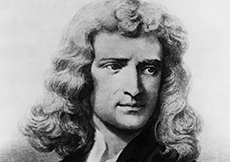
The Tudor period of history began in the year 1485 when King Henry VII became king. Learn about Henry VlI, his son Henry VIII and other kings and queens from the Tudor period as you complete these activities and prepare for the Life in the UK test.
Religious conflicts
After his victory in the Wars of the Roses, Henry VII wanted to make sure that England remained peaceful and that his position as king was secure. He deliberately strengthened the central administration of England and reduced the power of the nobles. He was thrifty and built up the monarchy’s financial reserves. When he died, his son Henry VIII continued the policy of centralising power.
Henry VIII was most famous for breaking away from the Church of Rome and marrying six times.
The six wives of Henry VIII
To divorce his first wife, Henry needed the approval of the Pope. When the Pope refused, Henry established the Church of England. In this new Church, the king, not the Pope, would have the power to appoint bishops and order how people should worship.
At the same time the Reformation was happening across Europe. This was a movement against the authority of the Pope and the ideas and practices of the Roman Catholic Church. The Protestants formed their own churches. They read the Bible in their own languages instead of in Latin; they did not pray to saints or at shrines; and they believed that a person’s own relationship with God was more important than submitting to the authority of the Church. Protestant ideas gradually gained strength in England, Wales and Scotland during the 16th century.
In Ireland, however, attempts by the English to impose Protestantism (alongside efforts to introduce the English system of laws about the inheritance of land) led to rebellion from the Irish chieftains, and much brutal fighting followed.
During the reign of Henry VIII, Wales became formally united with England by the Act for the Government of Wales. The Welsh sent representatives to the House of Commons and the Welsh legal system was reformed.
Henry VIII was succeeded by his son Edward VI, who was strongly Protestant. During his reign, the Book of Common Prayer was written to be used in the Church of England. A version of this book is still used in some churches today. Edward died at the age of 15 after ruling for just over six years, and his half-sister Mary became queen. Mary was a devout Catholic and persecuted Protestants (for this reason, she became known as ‘Bloody Mary’). Mary also died after a short reign and the next monarch was her half-sister, Elizabeth, the daughter of Henry VIII and Anne Boleyn.
Queen Elizabeth I
Queen Elizabeth I was a Protestant. She re-established the Church of England as the official Church in England. Everyone had to attend their local church and there were laws about the type of religious services and the prayers which could be said, but Elizabeth did not ask about people’s real beliefs. She succeeded in finding a balance between the views of Catholics and the more extreme Protestants. In this way, she avoided any serious religious conflict within England. Elizabeth became one of the most popular monarchs in English history, particularly after 1588, when the English defeated the Spanish Armada (a large fleet of ships), which had been sent by Spain to conquer England and restore Catholicism.
The Reformation in Scotland and Mary, Queen of Scots
Scotland had also been strongly influenced by Protestant ideas. In 1560, the predominantly Protestant Scottish Parliament abolished the authority of the Pope in Scotland and Roman Catholic religious services became illegal. A Protestant Church of Scotland with an leadership was established but, unlike in England, this was not a state Church.
The queen of Scotland, Mary Stuart (often now called ‘Mary, Queen of Scots’) was a Catholic. She was only a week old when her father died and she became queen. Much of her childhood was spent in France. When she returned to Scotland, she was the centre of a power struggle between different groups. When her husband was murdered, Mary was suspected of involvement and fled to England. She gave her throne to her Protestant son, James VI of Scotland. Mary was Elizabeth I’s cousin and hoped that Elizabeth might help her, but Elizabeth suspected Mary of wanting to take over the English throne, and kept her a prisoner for 20 years. Mary was eventually executed, accused of plotting against Elizabeth I.
Exploration, poetry and drama
The Elizabethan period in England was a time of growing patriotism: a feeling of pride in being English. English explorers sought new trade routes and tried to expand British trade into the Spanish colonies in the Americas. Sir Francis Drake, one of the commanders in the defeat of the Spanish Armada, was one of the founders of England’s naval tradition. His ship, the Golden Hind, was one of the first to sail right around (‘circumnavigate’) the world. In Elizabeth I’s time, English settlers first began to colonise the eastern coast of America. This colonisation, particularly by people who disagreed with the religious views of the next two kings, greatly increased in the next century.
The Elizabethan period is also remembered for the richness of its poetry and drama, especially the plays and poems of William Shakespeare.
William Shakespeare (1564–1616)

Shakespeare was born in Stratford-upon-Avon, England. He was a playwright and actor and wrote many poems and plays. His most famous plays include A Midsummer Night’s Dream, Hamlet, Macbeth and Romeo and Juliet. He also dramatised significant events from the past, but he did not focus solely on kings and queens. He was one of the first to portray ordinary Englishmen and women. Shakespeare had a great influence on the English language and invented many words that are still common today. Lines from his plays and poems which are often still quoted include:
Many people regard Shakespeare as the greatest playwright of all time. His plays and poems are still performed and studied in Britain and other countries today. The Globe Theatre in London is a modern copy of the theatres in which his plays were first performed.
James VI and I
Elizabeth I never married and so had no children of her own to inherit her throne. When she died in 1603 her heir was her cousin James VI of Scotland. He became King James I of England, Wales and Ireland but Scotland remained a separate country.
The King James Bible
One achievement of King James’ reign was a new translation of the Bible into English. This translation is known as the ‘King James Version’ or the ‘Authorised Version’. It was not the first English Bible but is a version which continues to be used in many Protestant churches today.
Ireland
During this period, Ireland was an almost completely Catholic country. Henry VII and Henry VIII had extended English control outside the Pale (see War at Home and Abroad) and had established English authority over the whole country. Henry VIII took the title ‘King of Ireland’. English laws were introduced and local leaders were expected to follow the instructions of the Lord Lieutenants in Dublin.
During the reigns of Elizabeth I and James I, many people in Ireland opposed rule by the Protestant government in England. There were a number of rebellions. The English government encouraged Scottish and English Protestants to settle in Ulster, the northern province of Ireland, taking over the land from Catholic landholders. These settlements were known as plantations. Many of the new settlers came from south-west Scotland and other land was given to companies based in London. James later organised similar plantations in several other parts of Ireland. This had serious longterm consequences for the history of England, Scotland and Ireland.
The rise of Parliament
Elizabeth I was very skilled at managing Parliament. During her reign, she was successful in balancing her wishes and views against those of the House of Lords and those of the House of Commons, which was increasingly Protestant in its views.
James I and his son Charles I were less skilled politically. Both believed in the ‘Divine Right of Kings’: the idea that the king was directly appointed by God to rule. They thought that the king should be able to act without having to seek approval from Parliament. When Charles I inherited the thrones of England, Wales, Ireland and Scotland, he tried to rule in line with this principle. When he could not get Parliament to agree with his religious and foreign policies, he tried to rule without Parliament at all. For 11 years, he found ways in which to raise money without Parliament’s approval but eventually trouble in Scotland meant that he had to recall Parliament.
The beginning of the English civil war
Charles I wanted the worship of the Church of England to include more ceremony and introduced a revised Prayer Book. He tried to impose this Prayer Book on the Presbyterian Church in Scotland and this led to serious unrest. A Scottish army was formed and Charles could not find the money he needed for his own army without the help of Parliament. In 1640, he recalled Parliament to ask it for funds. Many in Parliament were Puritans, a group of Protestants who advocated strict and simple religious doctrine and worship. They did not agree with the king’s religious views and disliked his reforms of the Church of England. Parliament refused to give the king the money he asked for, even after the Scottish army invaded England.
Another rebellion began in Ireland because the Roman Catholics in Ireland were afraid of the growing power of the Puritans. Parliament took this opportunity to demand control of the English army – a change that would have transferred substantial power from the king to Parliament. In response, Charles I entered the House of Commons and tried to arrest five parliamentary leaders, but they had been warned and were not there. (No monarch has set foot in the Commons since.) Civil war between the king and Parliament could not now be avoided and began in 1642. The country split into those who supported the king (the Cavaliers) and those who supported Parliament (the Roundheads).
Oliver Cromwell and the English Republic
The king’s army was defeated at the Battles of Marston Moor and Naseby. By 1646, it was clear that Parliament had won the war. Charles was held prisoner by the parliamentary army. He was still unwilling to reach any agreement with Parliament and in 1649 he was executed.
England declared itself a republic, called the Commonwealth. It no longer had a monarch. For a time, it was not totally clear how the country would be governed. For now, the army was in control. One of its generals, Oliver Cromwell, was sent to Ireland, where the revolt which had begun in 1641 still continued and where there was still a Royalist army. Cromwell was successful in establishing the authority of the English Parliament but did this with such violence that even today Cromwell remains a controversial figure in Ireland.
The Scots had not agreed to the execution of Charles I and declared his son Charles II to be king. He was crowned king of Scotland and led a Scottish army into England. Cromwell defeated this army in the Battles of Dunbar and Worcester. Charles II escaped from Worcester, famously hiding in an oak tree on one occasion, and eventually fled to Europe. Parliament now controlled Scotland as well as England and Wales.
After his campaign in Ireland and victory over Charles II at Worcester, Cromwell was recognised as the leader of the new republic. He was given the title of Lord Protector and ruled until his death in 1658. When Cromwell died, his son, Richard, became Lord Protector in his place but was not able to control the army or the government. Although Britain had been a republic for 11 years, without Oliver Cromwell there was no clear leader or system of government. Many people in the country wanted stability. People began to talk about the need for a king.
The Restoration
In May 1660, Parliament invited Charles II to come back from exile in the Netherlands. He was crowned King Charles II of England, Wales, Scotland and Ireland. Charles II made it clear that he had ‘no wish to go on his travels again’. He understood that he could not always do as he wished but would sometimes need to reach agreement with Parliament. Generally, Parliament supported his policies. The Church of England again became the established official Church. Both Roman Catholics and Puritans were kept out of power.
During Charles II’s reign, in 1665, there was a major outbreak of plague in London. Thousands of people died, especially in poorer areas. The following year, a great fire destroyed much of the city, including many churches and St Paul’s Cathedral. London was rebuilt with a new St Paul’s, which was designed by a famous architect, Sir Christopher Wren. Samuel Pepys wrote about these events in a diary which was later published and is still read today.
The Habeas Corpus Act became law in 1679. This was a very important piece of legislation which remains relevant today. Habeas corpus is Latin for ‘you must present the person in court’. The Act guaranteed that no one could be held prisoner unlawfully. Every prisoner has a right to a court hearing.
Charles II was interested in science. During his reign, the Royal Society was formed to promote ‘natural knowledge’. This is the oldest surviving scientific society in the world. Among its early members were Sir Edmund Halley, who successfully predicted the return of the comet now called Halley’s Comet, and Sir Isaac Newton.
Isaac Newton (1643–1727)

Born in Lincolnshire, eastern England, Isaac Newton first became interested in science when he studied at Cambridge University. He became an important figure in the field. His most famous published work was Philosophiae Naturalis Principia Mathematica (‘Mathematical Principles of Natural Philosophy’), which showed how gravity applied to the whole universe. Newton also discovered that white light is made up of the colours of the rainbow. Many of his discoveries are still important for modern science.
A Catholic King
Charles II had no legitimate children. He died in 1685 and his brother, James, who was a Roman Catholic, became King James II in England, Wales and Ireland and King James VII of Scotland. James favoured Roman Catholics and allowed them to be army Officers, which an Act of Parliament had forbidden. He did not seek to reach agreements with Parliament and arrested some of the bishops of the Church of England. People in England worried that James wanted to make England a Catholic country once more. However, his heirs were his two daughters, who were both firmly Protestant, and people thought that this meant there would soon be a Protestant monarch again. Then, James’s wife had a son. Suddenly, it seemed likely that the next monarch would not be a Protestant after all.
The Glorious Revolution
James II’s elder daughter, Mary, was married to her cousin William of Orange, the Protestant ruler of the Netherlands. In 1688, important Protestants in England asked William to invade England and proclaim himself king. When William reached England, there was no resistance. James fled to France and William took over the throne, becoming William III in England, Wales and Ireland, and William II of Scotland. William ruled jointly with Mary. This event was later called the ‘Glorious Revolution’ because there was no fighting in England and because it guaranteed the power of Parliament, ending the threat of a monarch ruling on his or her own as he or she wished. James II wanted to regain the throne and invaded Ireland with the help of a French army. William defeated James II at the Battle of the Boyne in Ireland in 1690, an event which is still celebrated by some in Northern Ireland today. William re-conquered Ireland and James fled back to France. Many restrictions were placed on the Roman Catholic Church in Ireland and Irish Catholics were unable to take part in the government.
There was also support for James in Scotland. An attempt at an armed rebellion in support of James was quickly defeated at Killiecrankie. All Scottish clans were required formally to accept William as king by taking an oath. The MacDonalds of Glencoe were late in taking the oath and were all killed. The memory of this massacre meant some Scots distrusted the new government.
Some continued to believe that James was the rightful king, particularly in Scotland. Some joined him in exile in France; others were secret supporters. James’ supporters became known as Jacobites.